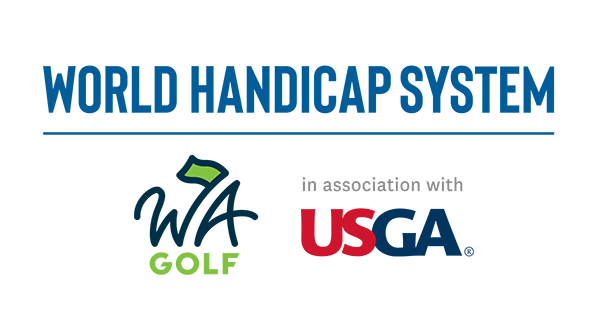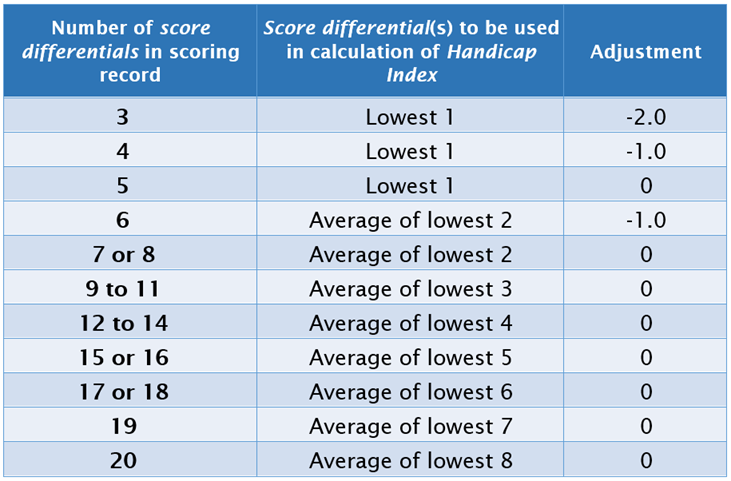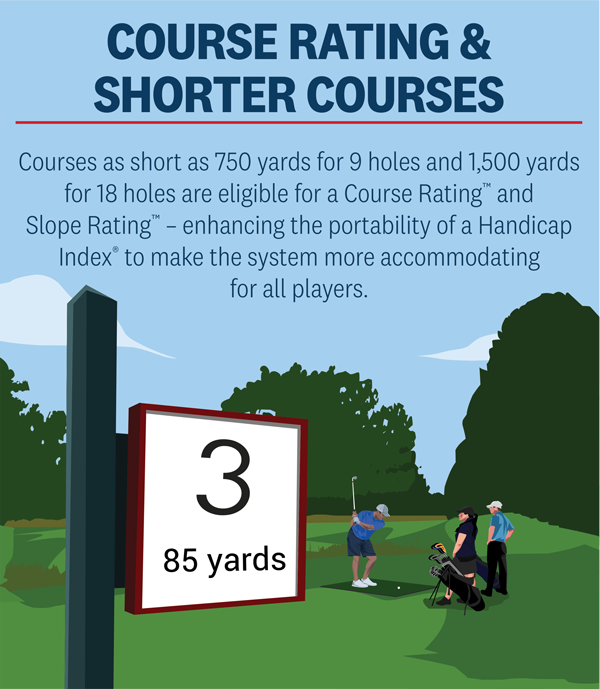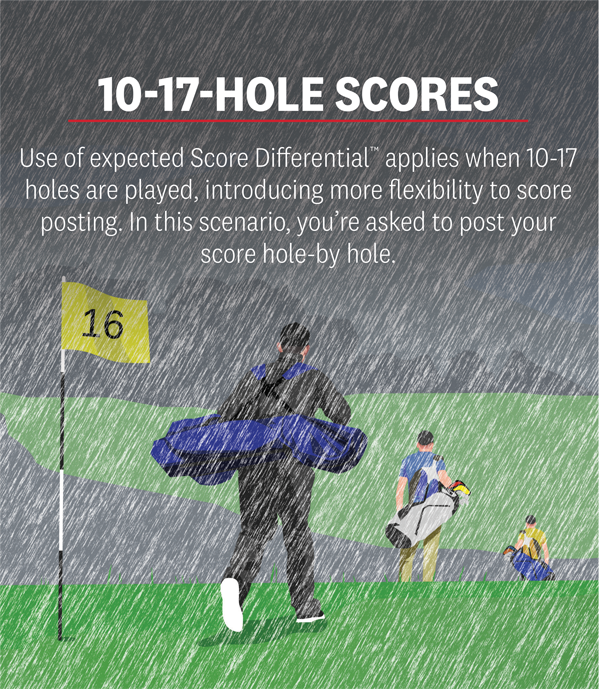
In early 2020, the USGA and the R&A introduced the World Handicap System (WHS), unifying golf under a single set of handicapping rules for a consistent global player ability measure. The WHS enables golfers of varying abilities to compete equitably worldwide. This hub is your comprehensive resource for all things related to the WHS.
Questions? Contact us at [email protected].
WHS Resources
Rules of Handicapping with Handicap Committee Guide
A comprehensive guide to the Rules of Handicapping, provided by the USGA. These rules are effective January 2024.
Course Rating and Slope
To ensure that your handicap index can be used at golf courses worldwide, with different tee locations, the World Handicap System (WHS) uses a special method called "Course Rating and Slope" calculations. WA Golf handles these calculations for courses in our region.
Handicap Explainer Videos
View a series of short videos from the USGA that explain all you need to know about a Handicap Index.
WA Golf WHS Webinars
View webinars, hosted by WA Golf's Assistant Director of Handicapping & Course Rating Collin Westwood, that go over the World Handicap System.
Player Reference Guide on the Rules of Handicapping
View the Player Reference Guide linked below to learn everything you need to know about using your Handicap Index in 2024.
Three Key Changes for 2024
Popular WHS Topics
Net Double Bogey
If you’re just starting with the system and entering your first three scores to set up your Handicap Index®, the highest score you can record for a hole is par + 5.
After your Handicap Index is set up, the highest score you can submit is a net double bogey. This score is a double bogey plus any extra strokes you get, which depend on your Course Handicap™.
Resources on this topic:
Soft Cap and Hard Cap
Every golfer experiences ups and downs, but a player’s underlying ability usually does not change significantly over a year. To avoid big increases in the Handicap Index, there are two limits built into the Handicap Index calculation: a soft cap and a hard cap. These act as protective measures.
- If your Handicap Index increases by 3.0 strokes within a year, the soft cap slows the rate of additional movement beyond 3.0 strokes by 50%.
- The hard cap sets a max increase of 5.0 total strokes within a year.
Resources on this topic:
- Video – “On Course with the USGA Handicap Department – Soft Cap and Hard Cap”
- Detailed Explainer – Understanding the soft cap and hard cap
- Poster – Capping Excessive Increases in Handicap Index®
- FAQ – Is there a limit on how much my Handicap Index can increase?
- FAQ – What is my Low Handicap Index™ and why is it displayed in my scoring record?
Handicap Index Calculation
Your Handicap Index is a number that travels with you that represents your demonstrated golfing ability. It’s calculated from your previous scores, taking into account how tough the course and tees were, as well as the playing conditions during each of those rounds.
To calculate your Handicap Index, your eight best Score Differentials from your most recent 20 scores are averaged, and additional safeguards are included that:
- Prevent excessive upward movement within one year (see caps), and
- Further reduce a Handicap Index after an exceptional score is posted (see exceptional score reduction).
The table below shows how a Handicap Index is calculated for players with less than 20 scores in their record.

Resources on this topic:
- Video – “On Course with the USGA Handicap Department – The Handicap Calculation”
- FAQ – What is a Score Differential™ and how is it calculated?
- FAQ – How is a Handicap Index® Calculated?
- FAQ – I always play the same tees. Is my Handicap Index “established” from that set?
- Infographic – Safeguards Included Within the Handicap Index Calculation
Using your Course Handicap
Your Handicap Index® serves as a measure of your demonstrated golfing ability, adaptable for different settings.
When it comes time to play, this index transforms into a Course Handicap, tailored to the specific challenges of the course and its tees. For casual games, the Course Handicap is key. It’s the figure that helps adjust scores for situations like net double bogey and net par. You can calculate your Course Handicap using the GHIN Mobile App.

In competitive scenarios where handicaps are adjusted for equity (like 85% in a four-ball stroke play), your handicap becomes a Playing Handicap. This adjusted number is crucial for the rules and structure of the tournament or match.

Here’s a simple trick to help remember how these values differ:
- Course Handicap = You against the course.
- Playing Handicap = You against the other players.
Resources on this topic:
- FAQ – How do I calculate my Course Handicap and Playing Handicap?
- FAQ – What is the difference between a Course Handicap and Playing Handicap?
- Infographic – How to use your Handicap Index® under the WHS™
- Poster – Calculation of Playing Handicap
- Video – “On Course with the USGA Handicap Department – Setting up a Four-Ball Match”
Exceptional Score Reduction
Under the Rules of Handicapping, if a score produces a Score Differential™ that is 7.0 strokes or better than the player’s Handicap Index® at the time the round was played, it is considered exceptional and subject to an exceptional score reduction:
- If the Score Differential is between 7.0 and 9.9 strokes better, a -1 adjustment is applied to the player’s most recent 20 Score Differentials in their scoring record.
- If the Score Differential is 10.0 strokes or better, a -2 adjustment is applied to each of their most recent 20 Score Differentials.
Future scores made by the player will not contain the -1 or -2 adjustment (unless they are also exceptional), which allows the impact of the exceptional score reduction to slowly diminish over time.
Resources on this topic:
- FAQ – What is an exceptional score and what happens when I post one?
- Infographic – Safeguards included under the WHS™
- Poster – Exceptional Scores
Playing Conditions Calculation
At the end of each day, the USGA centralized computation system compares the actual scores made at each course to the expected scores of the players who made them. If the scores were significantly higher or lower than expected, an adjustment is automatically applied to everyone who played the course on the day.
The range of the PCC adjustment is -1 to +3, with a negative (-) adjustment meaning the course played easier than expected, and a positive (+) adjustment meaning the course played more difficult. On most days, the PCC will be zero (0). If a PCC is applied following one of your rounds, it will be clearly identified within your scoring record.
WHY EVERY SCORE MATTERS:
At least 8 scores must be posted before midnight (local time) in order for the calculation to take place – so it’s important for all of us as players to post our scores on the day of play.
Resources on this topic:
- Video – “On Course with the USGA Handicap Department – Playing Conditions Calculation (PCC)”
- Infographic – Breaking down the Playing Conditions Calculation (PCC)
- FAQ – What is the Playing Conditions Calculation?
- FAQ – Late Score Post – Will I still get the PCC adjustment?
- Poster – Playing Conditions Calculation
Handicapping FAQs
Curious about the benefits of having a golf handicap? Not sure how to obtain one? Are you a beginner in golf or have simple questions about handicaps? Explore our Handicap FAQs page for answers to all common questions.




